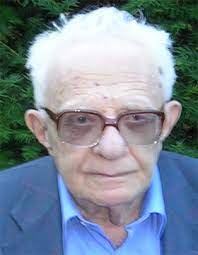Eisenstadt, Shmuel Noah

Bio: (1923-2010) Israeli sociologist. Shmuel Noah Eisenstadt received his doctorate from the Hebrew University of Jerusalem in 1947, where he taught until 1990. Although in the theoretical sense, he is close to Parsons' functionalism, he, in his work, applies different theoretical starting points, not only functionalism. He mostly studied historical sociology, and above all the development of empires. He studied the development of different empires throughout history from a macro-sociological comparative-analytical perspective. Eisenstadt, using a comparative analysis of the social structures of empires, concluded that all empires must meet several institutional and cultural preconditions. The basic precondition of any empire is the creation and preservation of resources that will not be under the control of traditional social structures. Bureaucracies and standing armies, which emerged with the formation of empires, exercised that role - a non-traditional resource. The cultural dimension and values of social actors are autonomous factors in the development of empires, which operates independently of socio-economic structures.
The relationship between the transcendental (religious-sacral) and secular orders in the empires of the first millennium BC is also an important issue for Eisenstadt. During the "Axial Age", as Karl Jaspers called it, which lasted from the eighth to the third century BC, there were similar developments in philosophy and religion in different civilizations: Chinese, Indian, Persian, and Greek. It is precisely this period that is the focus of Eisenstadt's interest because in it there was an institutionalization of tensions between the transcendental and the secular world order. In that period, intellectual elites began to advocate the transcendental order that would be realized on Earth, which led to the reorganization of social centers and new types of social dynamics.
Eisenstadt also studied the process of modernization. Modern modernization in Europe is a unique case that was the product of symbolic and institutional characteristics specifics of that civilization. As modernization spread around the world, "multiple modernities" developed, and the best example of a different modernization is Japan in the 19th century.
Fields of research
Actors Bureaucracy Colonialism Democracy Elites Empire History Intelligentsia (Social Group) Modernity Morality Protests Religion Revolutions Sign and Symbol State Tradition Trust War CivilizationTheoretical approaches
Modernization TheoryMain works
The Political Systems of Empires (1963);
Modernization: Protest and Change (1966);
Tradition, Change, and Modernity (1973);
Revolution and the Transformation of Societies: A Comparative Study of Civilizations (1978);
Patrons, Clients and Friends: Interpersonal Relations and the Structure of Trust in Society (1984);
The Origins and Diversity of Axial Age Civilizations (1986);
Patterns of Modernity (1987);
Japanese Civilization: A Comparative View (1996);
Multiple Modernities (2002).

